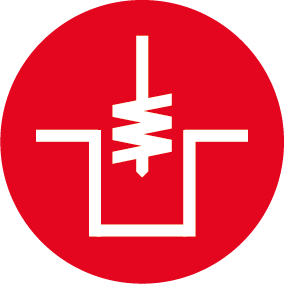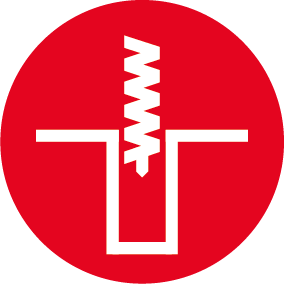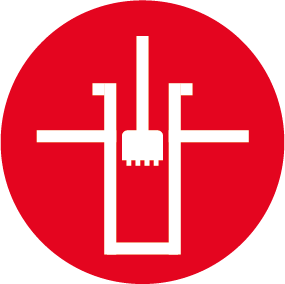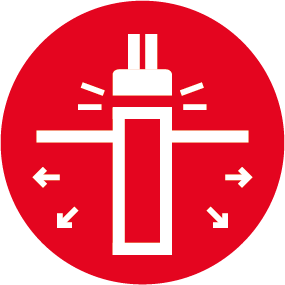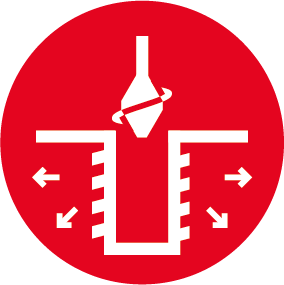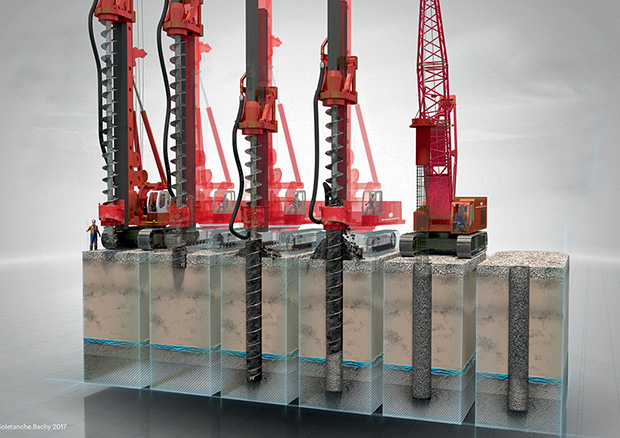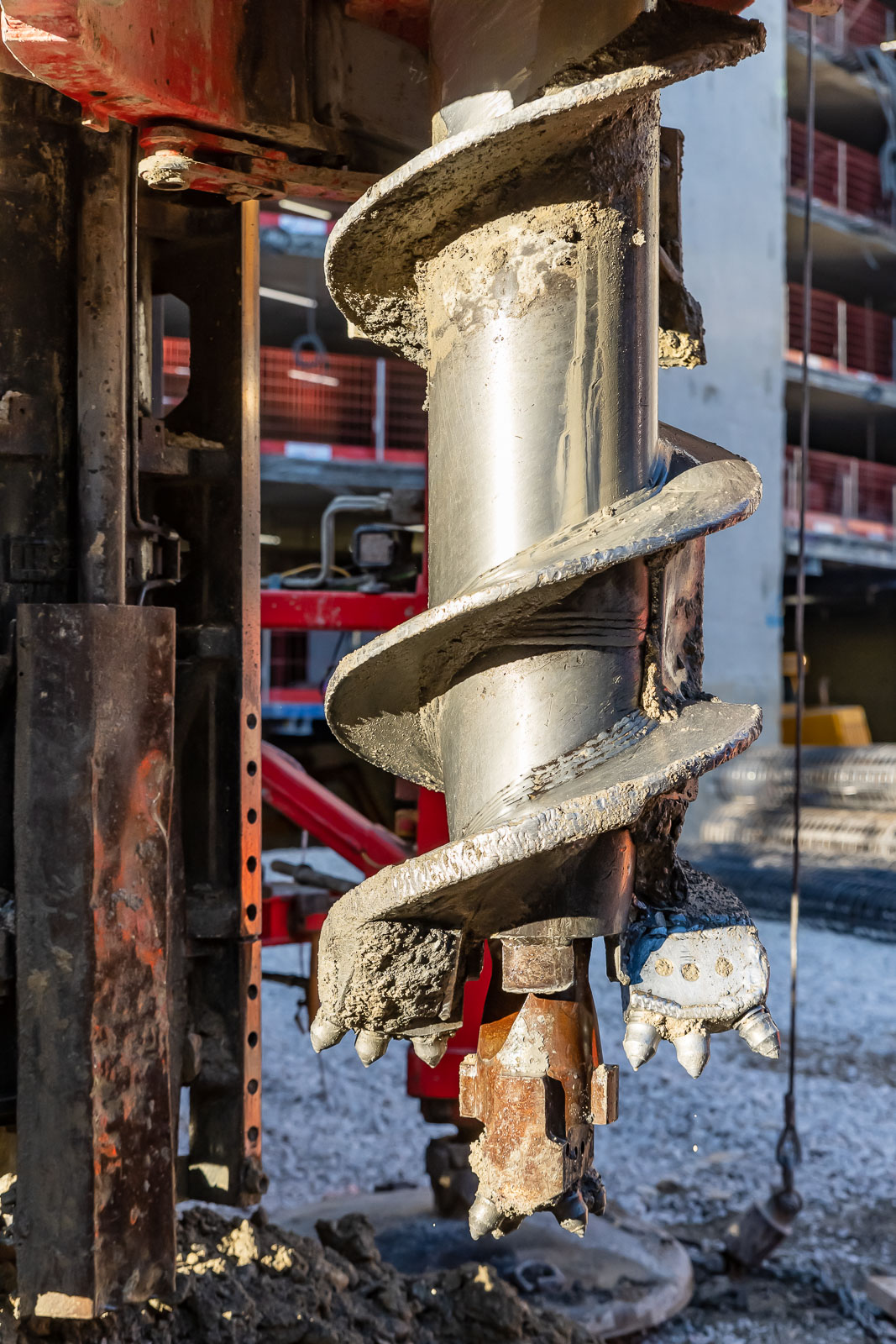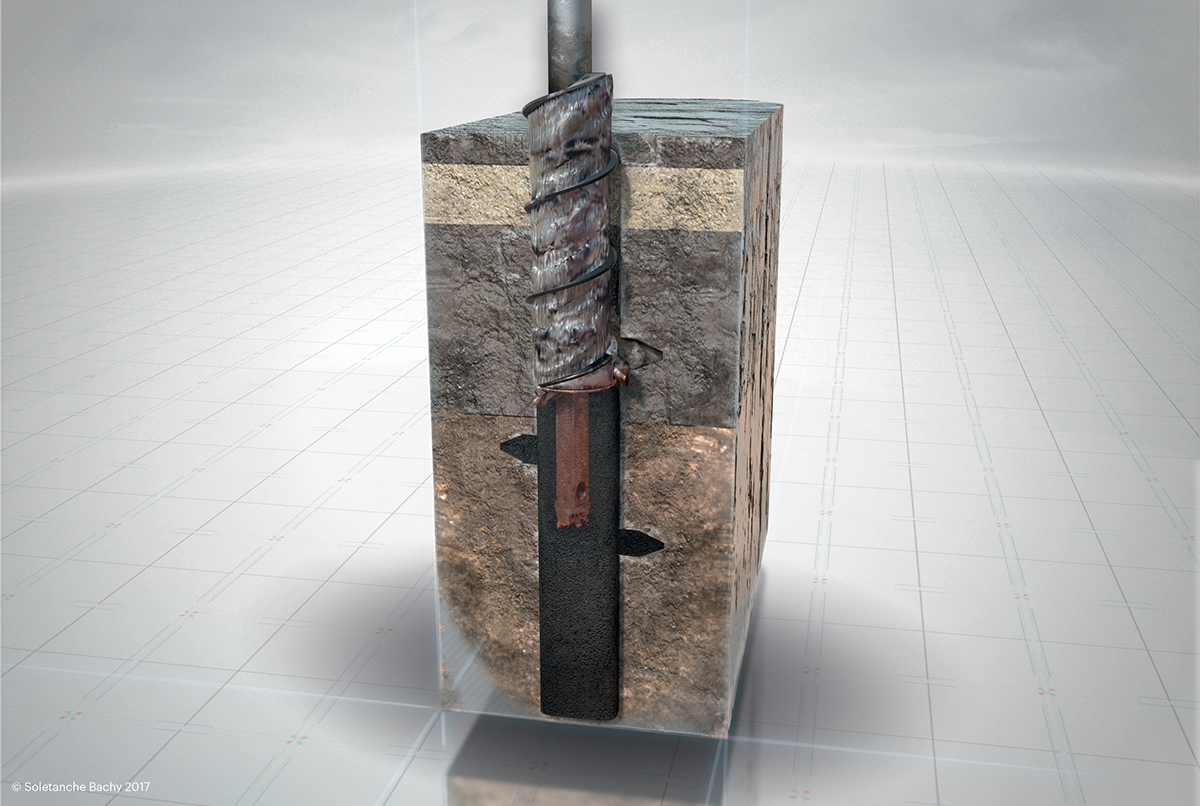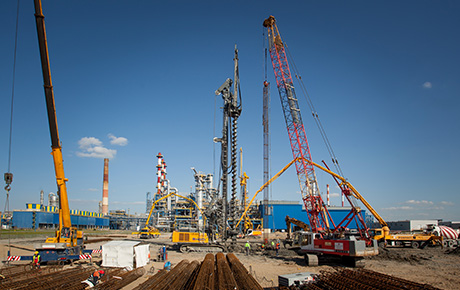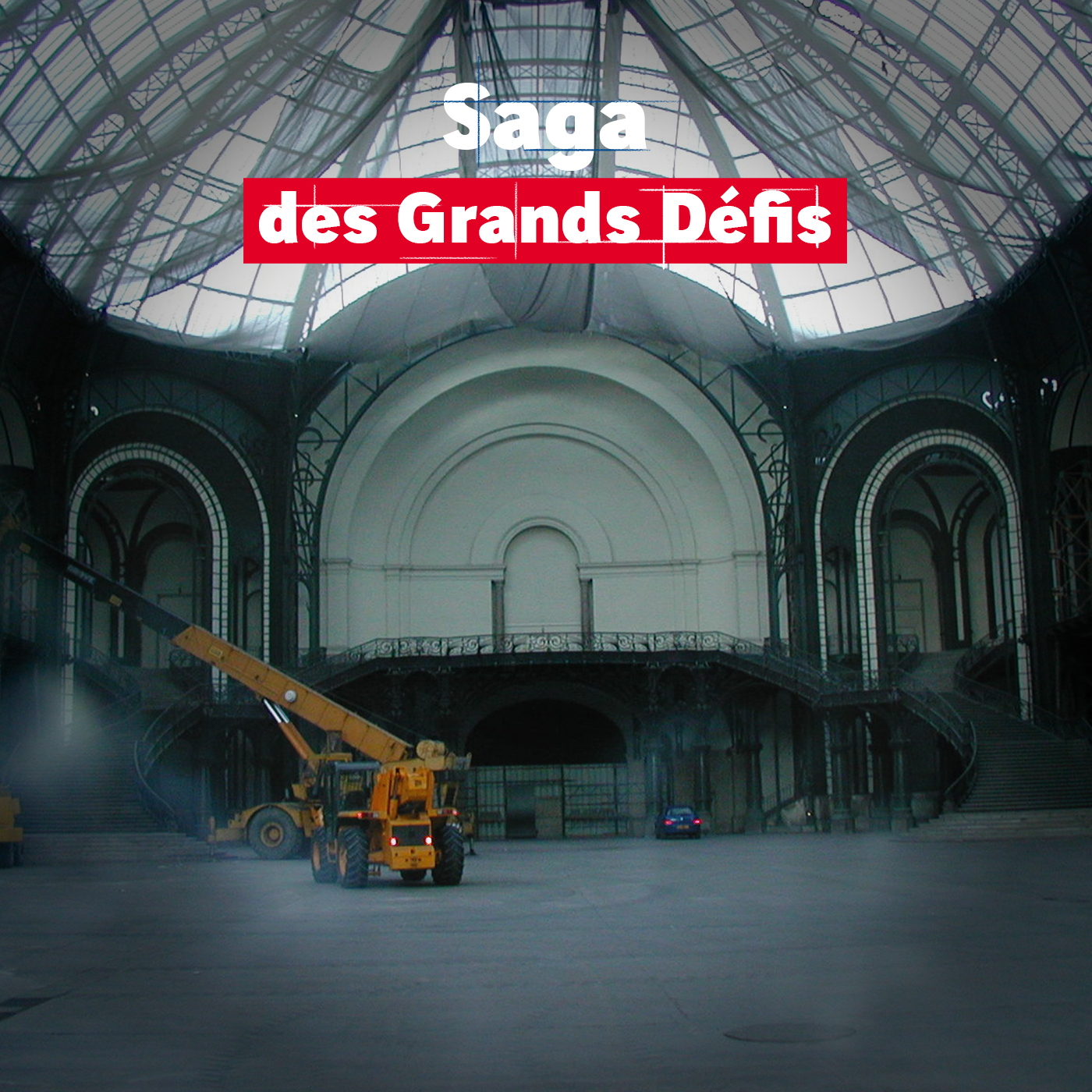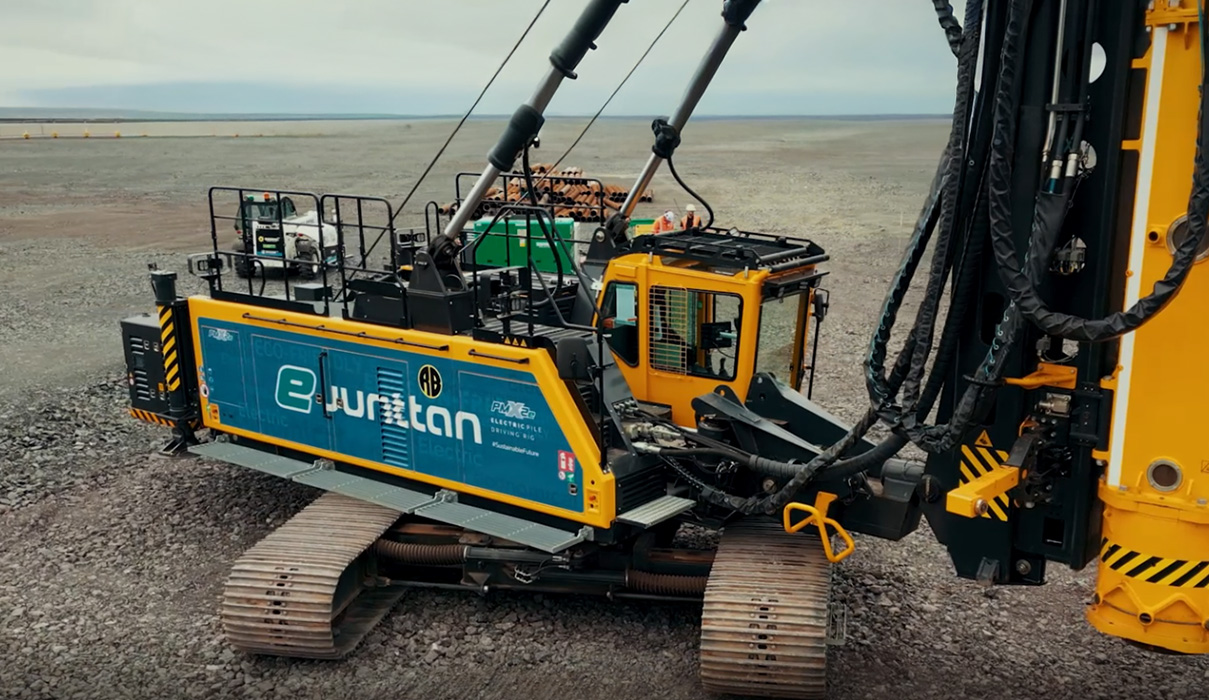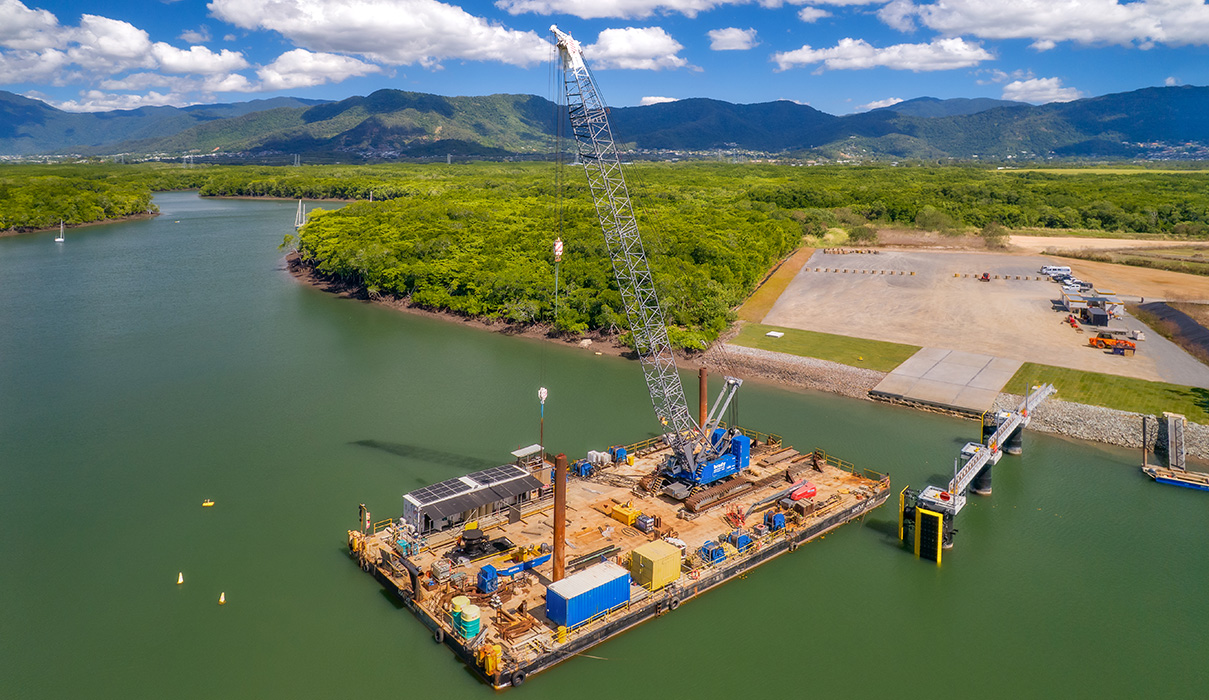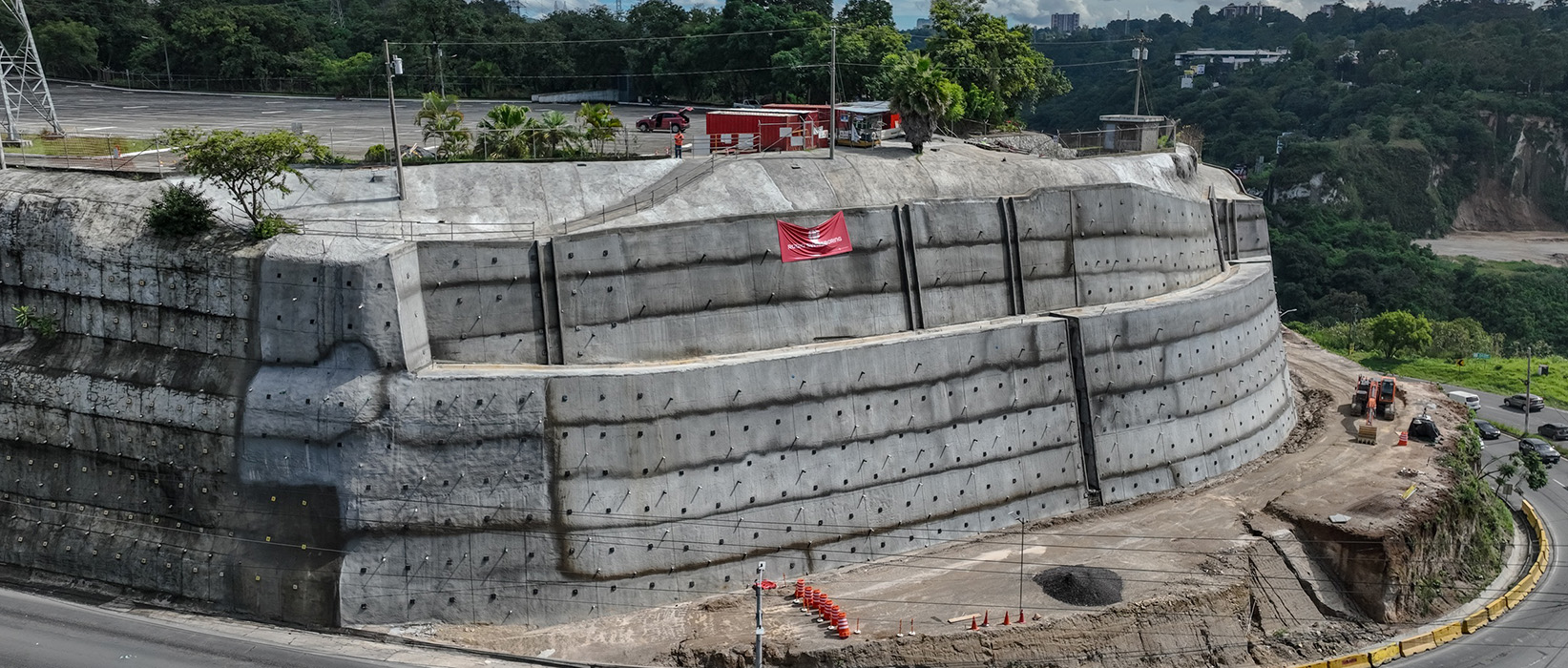Project Description
Soletanche Bachy presents its complete range of piles: continuous flight auger piles.
CFA (Continuous Flight Auger) piles are often used for deep foundations or for discontinuous retaining walls.
What is a continuous flight auger pile (CFA) ?
Piles are defined as structural elements placed in the ground to transfer loads and reduce deformation. Their aspect ratio is unlimited. Pile shafts can be straight, telescopic, wide and with a wide base or prefabricated.
Piles are either isolated or in groups. They can also form a retaining wall in the form of either a mixed curtain wall, adjoining piles, secant piles or a composite curtain wall, such as a Berlin-type wall or similar. Piles are also used as stanchions to be integrated into the structure of a building with basement levels.
These columns are put in place before any earthworks and can be used to bear part of the superstructure load when it is built in parallel with construction of the basement levels. They can be angled according to specifications indicated in the construction standards.
What are the different types of piles?
CFA piles are an alternative to bored piles particularly suitable for piles of average depth (generally less than 40m).
This technique allows faster mobilisation of smaller teams and faster completion speed in specific ground conditions.
CFA piles can be used as load-bearing piles for structural foundations or to create discontinuous retaining structures, such as a wall in secant piles.
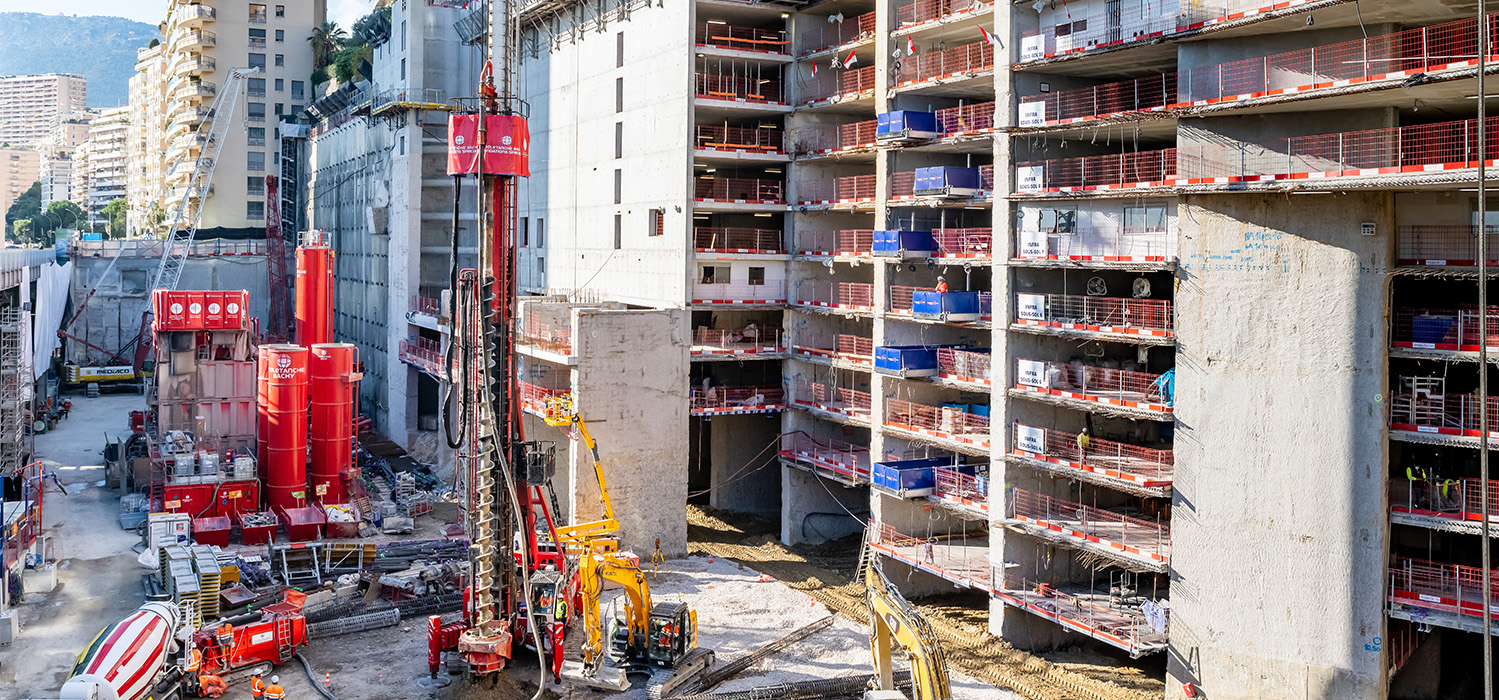
Les techniques CFA ont évolué rapidement au cours des 30 dernières années et Soletanche Bachy a été à la pointe de ces évolutions techniques développant notamment le procédé Starsol® en France ou RodioStar® en Espagne ainsi que la technique CSP particulièrement développé au Royaume Uni.
The benefits of this technique
A good production performance in granular soil
Mobilisation of smaller teams
Less vibration disturbance
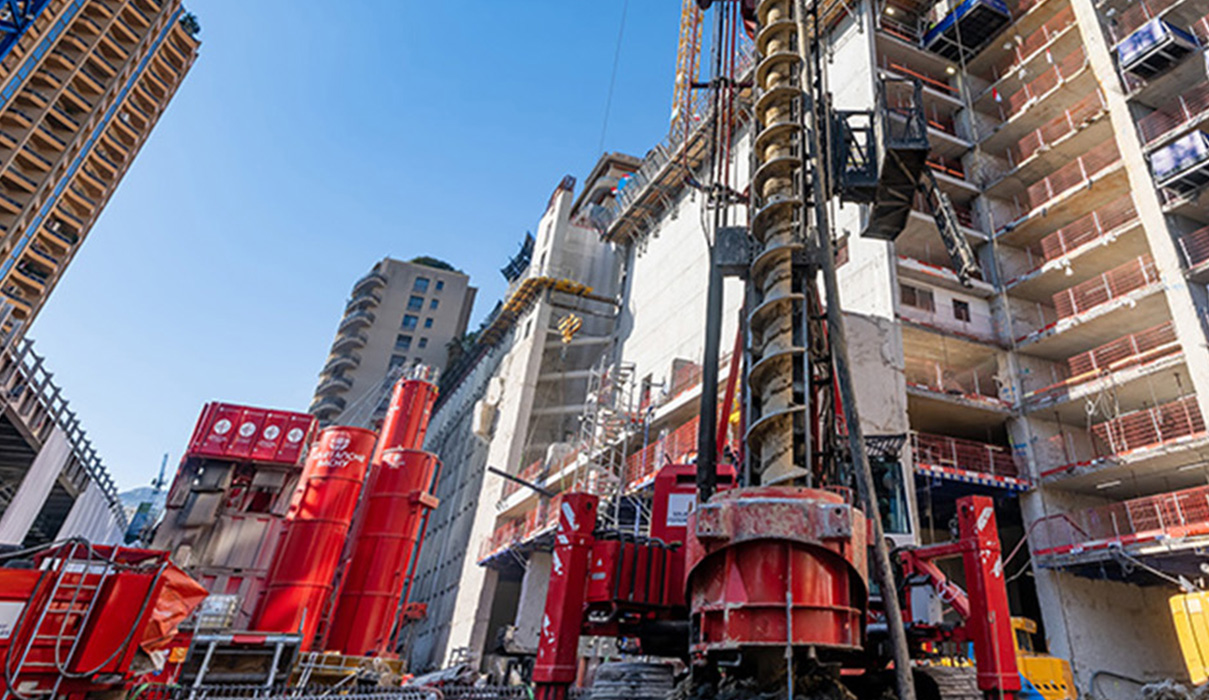
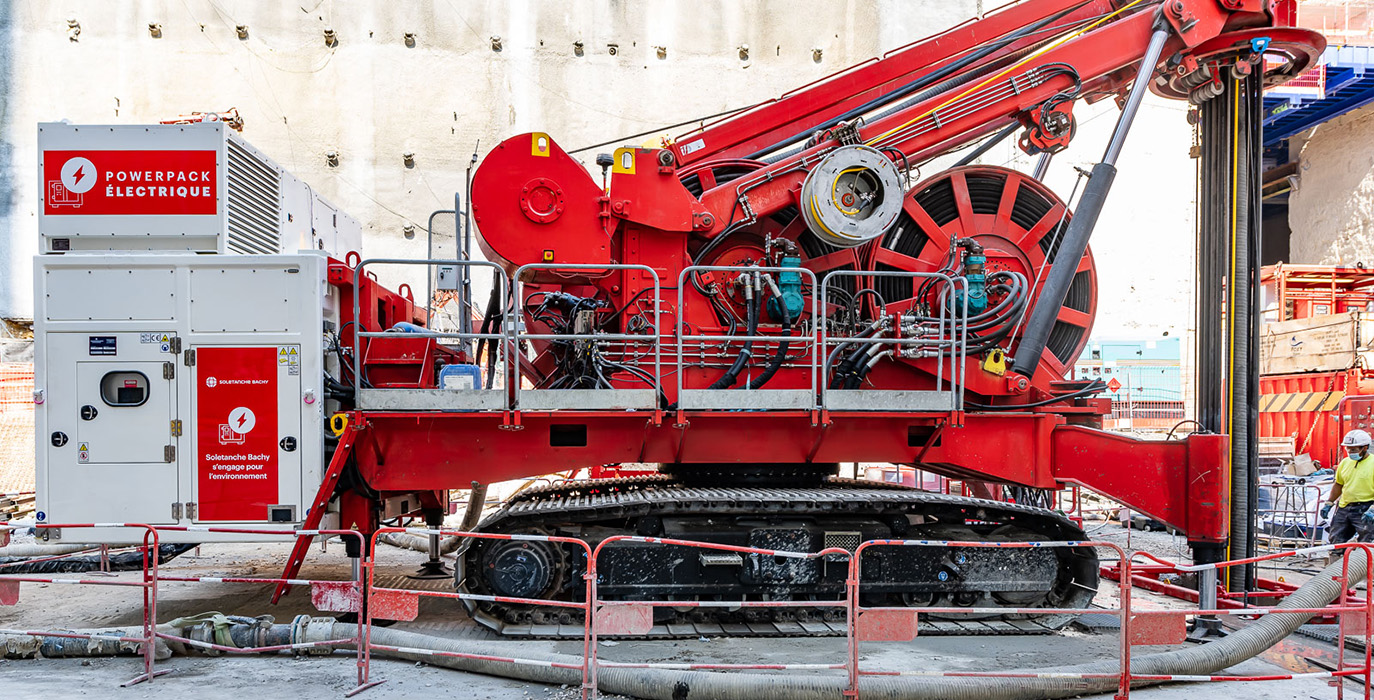
Implementation of a CFA pile
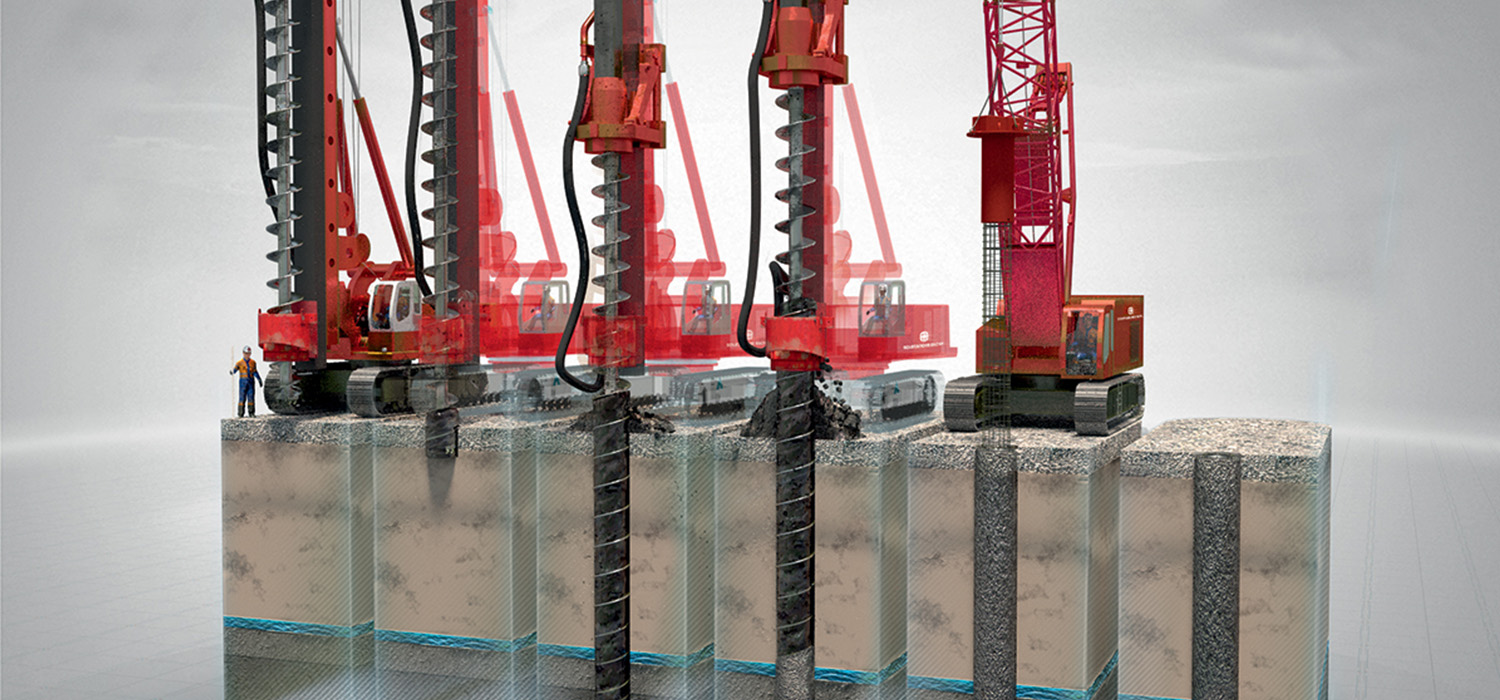
Continuous Flight Auger (CFA) piles are constructed using a full-length segmental flight auger with hollow stem (or a combination of augers and an extended Kelly bar for deeper piles).
The excavation is stabilised by the Continuous Flight Auger and the spoil generated during the boring process, eliminating the need for temporary casings or stabilising drilling fluid.
Concrete is injected at the base of the excavation via the hollow stem and fills the excavation once the auger is lifted out.
The concrete pressure must be sufficiently high and the auger must remain embedded in the freshly cast concrete to avoid any risk of soil collapse which could harm the quality of the pile. Unlike the LDA process, in which cages are suspended in the pile hole, the reinforcement is immersed in the fresh concrete at the end of the pile construction process.
Carefully managed concrete rheology is vital, especially in the longest reinforcement cages.
The diameters of bored piles commonly range from 600mm to 1.50m.
This technique makes it possible to reach common depths of around 35m, due to the limited size of Kelly bars.
Soletanche Bachy is also equipped with a Fundex F5500 drill rig, allowing it to build CFA piles up to 52m deep.
Soletanche Bachy’s advantages
Execution controls and monitoring
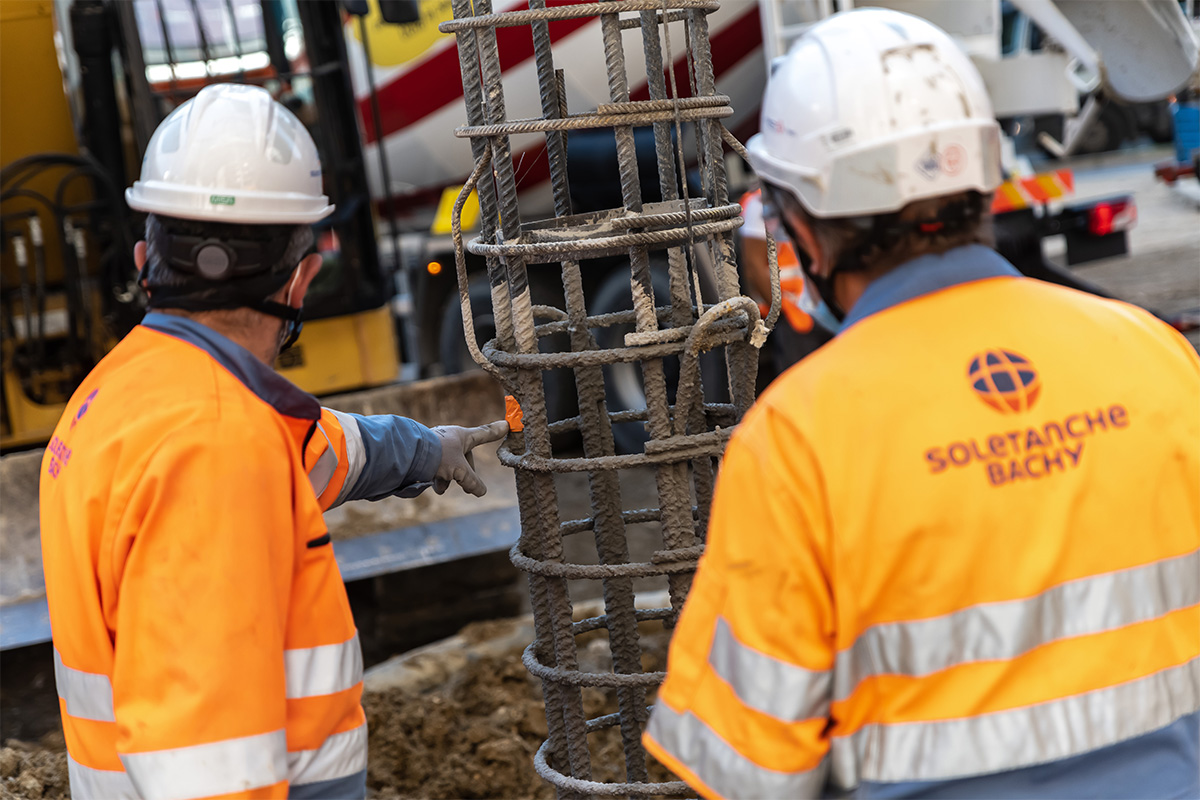
Concrete quality
Soletanche Bachy has developed very sophisticated high-performance machines with on-board electronic systems to ensure reliable construction of the piles according to the diameter of the aggregates and the concreting conditions.
The Starsol® system ensures the high quality of the pile’s concreting.
Drilling data management
The drill rigs in the Soletanche Bachy fleet are equipped with a verticality measurement system and parameter acquisition linked to the Zetta-Lyze® system developed by Soletanche Bachy. The Z-Lyze® tool is used to process and collect computer data generated in real time by the tools’ on-board acquisition systems.
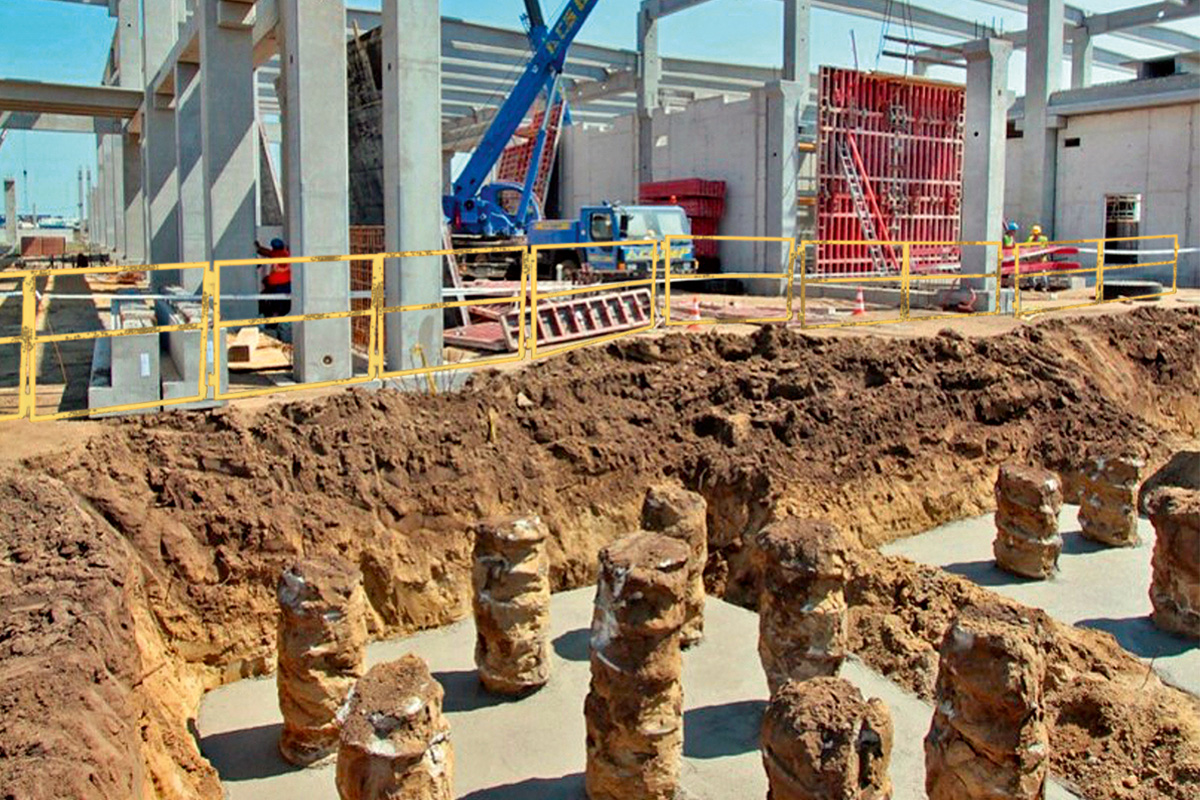
Did you know?
